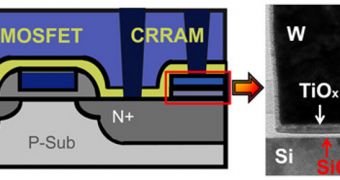Memristors are very versatile little things that store memory as resistance instead of electrical charges. In the past, we wrote of them when they were used for underwater memory, among other things.
Now, there is another item they allowed the creation of: a true random number generator small enough to be used in NFC chips.
Near-field communication processors could do with better encryption, and random numbers help in making that possible.
Unfortunately, true random number generation is difficult and needs a lot of space and power.
Researchers at Taiwan's National Tsing Hua University managed to get past some of the difficulties though. Through use of memristors, they made a generator capable o1 KHz rates, or 100 MHz when a feedback circuit is attached.
"The random codes we get from the fluctuation will never be known," one researcher tells IEEE Spectrum. "This will help improve existing encryption schemes." Aside from NFC systems in phones and smart tags, possible uses for the technology include low-power devices such as car keys and ID cards.
To create the numbers, the new system harnesses a new process using the natural trapping and releasing of electrons in a silicon dioxide film. Through that, and its size, it can become quite the boon to phones.

 14 DAY TRIAL //
14 DAY TRIAL //